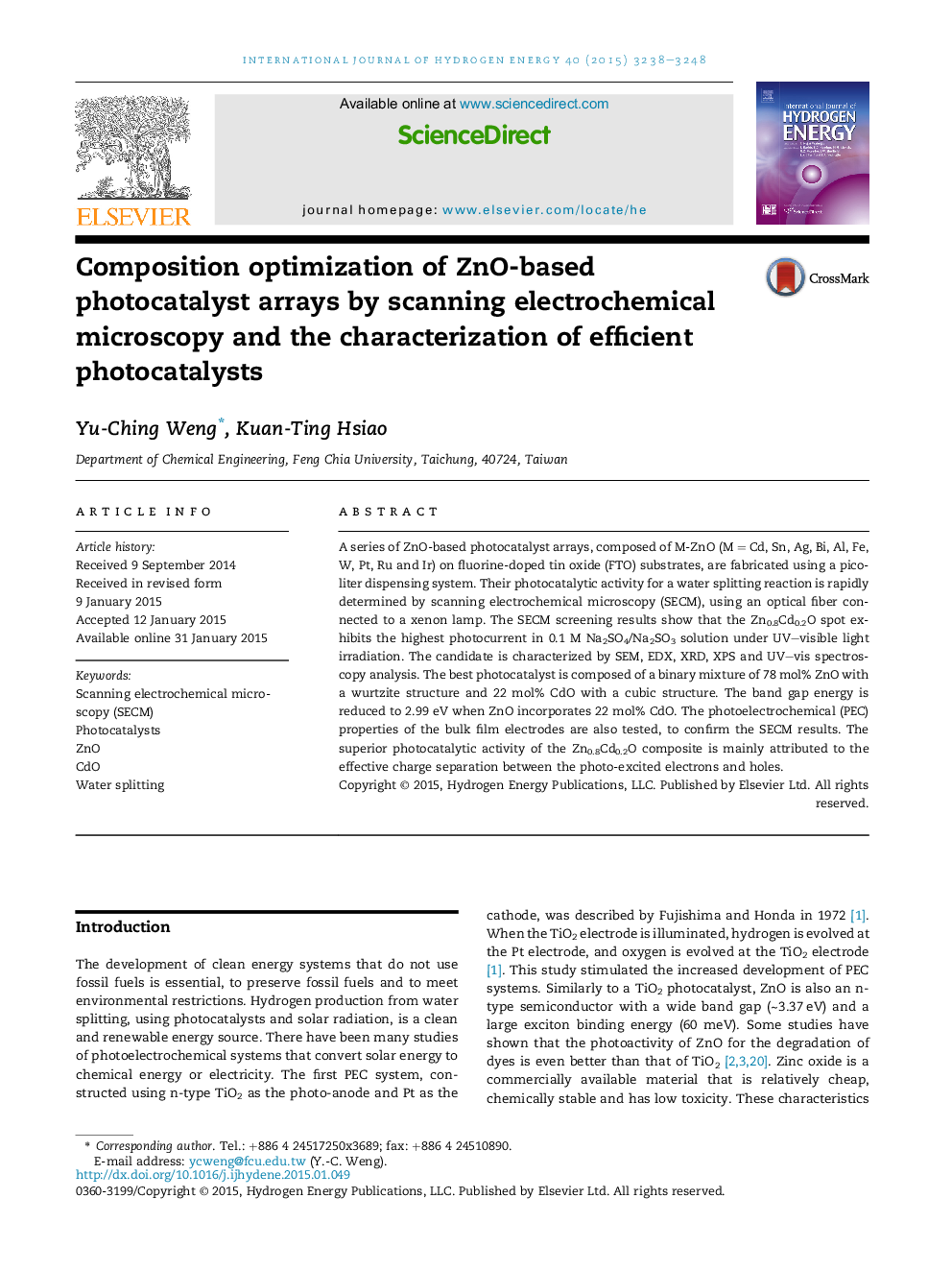| Article ID | Journal | Published Year | Pages | File Type |
|---|---|---|---|---|
| 1272019 | International Journal of Hydrogen Energy | 2015 | 11 Pages |
•Potential ZnO-based photocatalysts were identified by SECM.•Zn0.8Cd0.2O showed the highest photocurrent.•Zn0.8Cd0.2O was comprised of ZnO and CdO.•The IPCE value of Zn0.8Cd0.2O was higher than the bare ZnO or CdO.•The superior photocatalyst activity of Zn0.8Cd0.2O is attributed to the effective charge separation.
A series of ZnO-based photocatalyst arrays, composed of M-ZnO (M = Cd, Sn, Ag, Bi, Al, Fe, W, Pt, Ru and Ir) on fluorine-doped tin oxide (FTO) substrates, are fabricated using a pico-liter dispensing system. Their photocatalytic activity for a water splitting reaction is rapidly determined by scanning electrochemical microscopy (SECM), using an optical fiber connected to a xenon lamp. The SECM screening results show that the Zn0.8Cd0.2O spot exhibits the highest photocurrent in 0.1 M Na2SO4/Na2SO3 solution under UV–visible light irradiation. The candidate is characterized by SEM, EDX, XRD, XPS and UV–vis spectroscopy analysis. The best photocatalyst is composed of a binary mixture of 78 mol% ZnO with a wurtzite structure and 22 mol% CdO with a cubic structure. The band gap energy is reduced to 2.99 eV when ZnO incorporates 22 mol% CdO. The photoelectrochemical (PEC) properties of the bulk film electrodes are also tested, to confirm the SECM results. The superior photocatalytic activity of the Zn0.8Cd0.2O composite is mainly attributed to the effective charge separation between the photo-excited electrons and holes.
